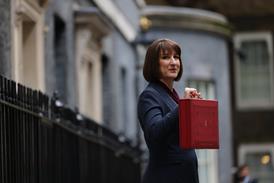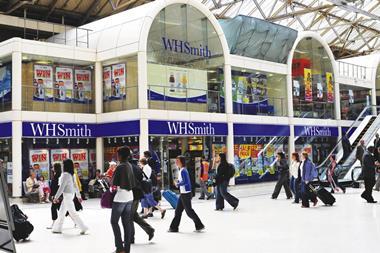Most of us are worse off now than at any point in the past five years. This finding won't surprise those faced by spiralling council tax, mortgage repayments and utility bills, but it does add up to less discretionary cash at the end of the month.
Ernst & Young's discretionary incomes study 2006/2007 puts into sharp focus the problems facing retailers as they struggle for a slice of an ever-smaller cake. Glance at the graph that accompanies the report and it's been a slow, but predictable, downhill plod. Since 2002/2003, monthly discretionary income for a typical UK household has dropped by almost 10 per cent.
At the end of the month, the average UK household now has a discretionary spend of£743.48 available compared with£825.50 five years ago. This may still sound quite a lot, but when that figure is divided up between the members of a family and then apportioned between retail, leisure activities and holidays - not to mention food - it doesn't amount to much.
The British Retail Consortium (BRC) greets the facts with what seems like a murmuring of 'we told you so'.
'In terms of retail demand, we know that consumer confidence is weak and retailers are keeping sales up by having more sales events and more discounting. It is a worry and that nervousness is finding its way onto the high street,' says a BRC spokesman. This amounts to retailers being forced to run faster to stay in the same place.
So have the increases in the cost of living resulted in consumer confidence being balanced on a knife-edge? If so, what does it mean for the high street?
Ernst & Young director of retail Tim Sleep takes an uncompromising view of how discretionary spend functions. 'I think you have to work backwards,' he says. 'The first thing that you do at the end of the month is to treat yourself to one or two extra luxurious food items and then maybe a fashion item and you go from there.'
By this reckoning, as Sleep proposes, it is unlikely that shoppers will be hotfooting it to the nearest electrical superstore, credit card in hand, demanding that their homes are kitted out with the latest surround-sound system. This seems like bad news for purveyors of big-ticket items such as furniture or white goods, because if push comes to shove, most consumers can make do for another year with a tired-looking sofa or a fridge that is on the blink but seems to stagger on.
Yet, somehow, shoppers still seem to dig deep for the things they really want. When DSGi revealed its results last week, chief executive John Clare made the point that sales of flatpanel TVs had been booming ahead of the World Cup. These are hardly items that can be considered low-price and yet retailers have been selling them almost as quickly as suppliers can provide them. Given that the price for a flatpanel TV of a reasonable size in Currys.digital stores is about£300, it indicates that other retailers must be feeling the breeze as shoppers kit their living rooms out in the technological grand style.
It is a point not lost on former Selfridges chief executive Peter Williams, who is now chief executive of Alpha Airports. 'Retail can't operate in a vacuum,' he says. 'So if discretionary spending is down, it is bound to be affected by that. I still think that people will manage to find the money to get that to-die-for handbag or the latest must-have gadget. What it will affect are the more commodity-based purchases. It also means that retail will have to shout louder to get its fair share of the spend.'
HMV chief executive Alan Giles agrees. 'Consumers will take a balanced approach to how they spend their money. We've seen how shoppers have gone out and bought flatscreen TVs recently, so when they want to spend, they still will,' he says.
The picture is a confusing one. Available cash for items that we don't need is in shorter supply than it was five years ago and yet if retailers are successful in creating a perceived need where it didn't previously exist, there are still winners.
Technology seems the obvious case. As well as flatpanel TVs, shoppers continue to clamour for MP3 players and the latest 3G handsets. All of these tend to start expensive and become cheaper - turning them into volume products for the mass market that had been seduced by their qualities when they first appeared at a higher price. Williams says: 'As things such as plasma screens become cheaper and they become accessible to a lot of people, then you may see an explosion of demand.'
For Blackwell's chief executive Vince Gunn there will always be room for good retailers. 'It's the same old story,' he says. 'The people who are best in class, the Lakelands and the Tescos, still hit the mark, while others may have trouble. About 75 per cent of our customers are students and, at the other end, there are people who are running companies. But even these people who are perhaps less affected (by changes in discretionary spending) are becoming more demanding.'
It is also worth considering inflation. Even allowing for low inflation historically, in the normal run of things you would expect to pay more for merchandise at the end of a five-year period than you did at its beginning. However, this is generally not the case.
In-built deflation may be a fact of life for electricals retailers, but for those operating in the clothing sector, ever-lower prices have become the hallmark of a crowded market and the continuing rise of the discounter.
So does this point to a future in which a small but select group of hyper-efficient retailers take all of the nation's dwindling disposable spend while the rest fall by the wayside? According to Planet Retail, last year's retail spend in our high streets, shopping parks and shopping centres was£250 billion, of which£110 billion went on food.
It is important to realise that while we eat to live, the bulk of supermarket spending is discretionary. Crudely, this leaves more than£140 billion that could truly be described as discretionary, whether it is fashion, DIY, gardening or anything else. Even allowing for a 10 per cent decline since 2002/2003. It is still a considerable sum.
The other question that has to be asked is - are we bumping along the discretionary spending bottom or does the steep drop shown in the graph have further to go?
Tesco development director Tony Vasishta takes a robust and pragmatic view of the Ernst & Young figures. 'There are lies, damned lies and statistics and as long as you listen to what your customers want and give them that, then you will remain an efficient and competitive retailer. That's why Tesco works,' he says.
We all like choice. But ultimately, this may be restricted because retailers will not find it worthwhile stocking such a wide range of items when shoppers don't have sufficient disposable income to buy what is on offer.
However, because of competitive pressure it seems more likely that dwindling disposable income probably means the same choice in-store, but shoppers buying less frequently. It all points towards reduced margins for retailers as they markdown to clear unwanted inventory.




























No comments yet